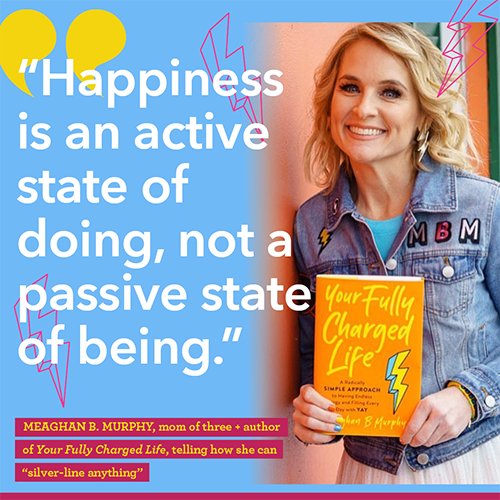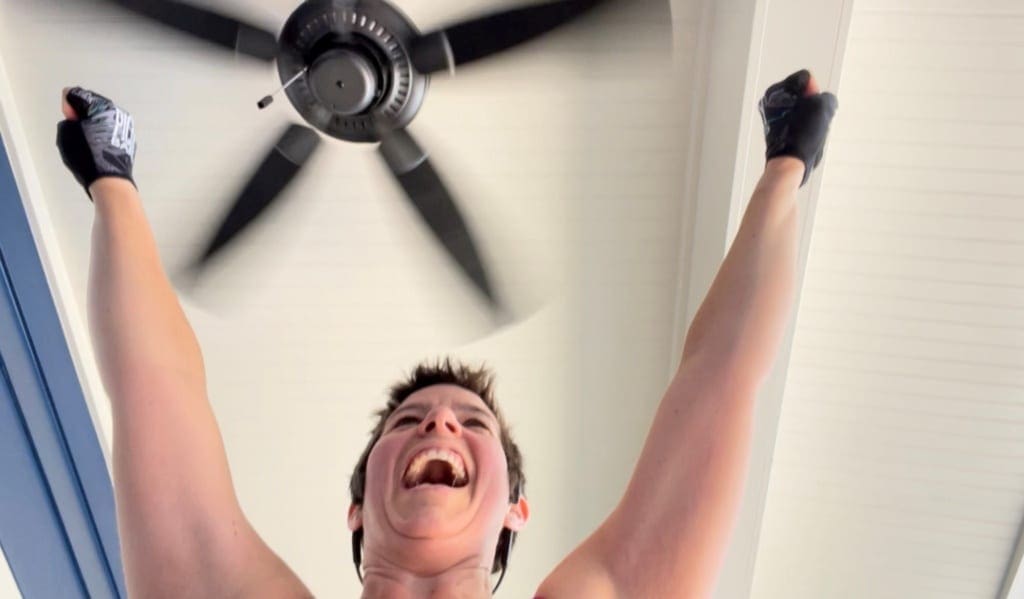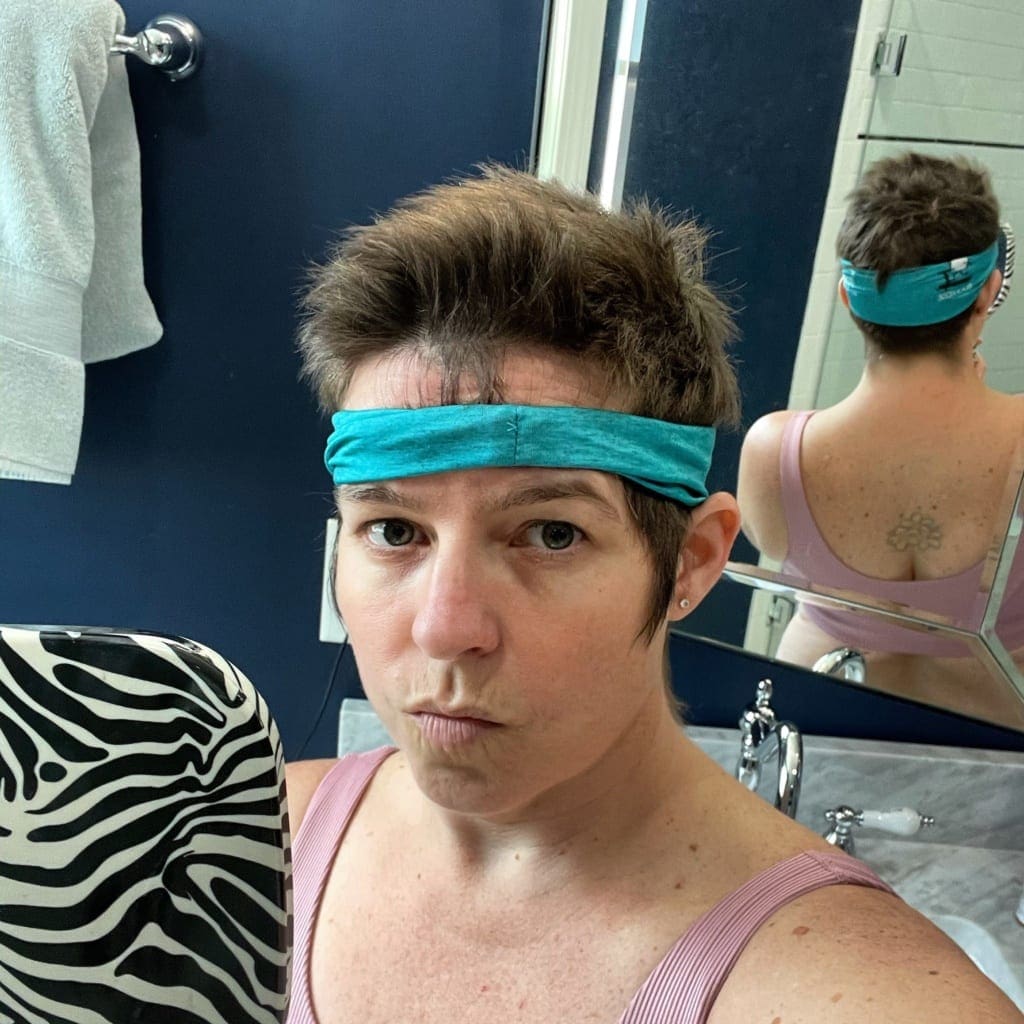#467: How to Read + Interpret Running Data

Sarah and Coach Liz dive into data-interpretation with Coach Jen Harrison to help you understand what all those GPS numbers mean—and how they can be used to your training advantage. The coaching duo details:
-what numbers they each keep an eye on while running, then post-workout;
-the can-you-trust-it accuracy of many stats;
-whether the lifestyle data can be a help—or a hinderance;
-how cadence is calculated—and what it can tell you; and,
-what those annoying “unproductive” or “inefficient” messages from your watch mean.
Sarah and Liz talk dirty (read: about bidets!) in the intro; at 13:57, Coach Jen jumps unexpectedly into the conversation.
When you shop our sponsors, you help AMR.
We appreciate your—and their—support.
Rev up with new Nuun Energy! Get 20% off all
Nuun products with code HYDRATEAMR at Nuunlife.com
Trust Pharmaca for wellness: Save 20% off
your first order at Pharmaca.com/AMR
For high-quality shades priced
as cool as they look, visit Knockaround.com
Dry Martini: Little Running Things
If projections hold and the planets align, I will run the Bristol (Rhode Island) Independence Half Marathon on June 26. It’ll be lucky number 13 in my 50 Halfs in 50 States quest, which I’ll restart in my 50th year in the smallest state. It’ll also be on the 19th birthday of the almost-adult who made me a mom. I have a hard time wrapping my head around how fast time has moved — how is she 19? — but will run rather than fret about something I can’t understand.
Speaking of time and how it moves quickly, in training terms, now is when the long runs start getting longer. On Saturday, I ran my second ten miler of 2021. It was all one could hope for: I covered the distance and my sciatica didn’t flare up. #winning

I’d love to point to some huge insight I had during the 2+ hours. But after more than a year of life-changing thoughts and feelings that worked themselves out when my feet were in motion, this run was full of little moments. It was a welcome change from sobbing at mile six.
The biggest difference between a double-digit run at the beginning of April and the end of April in this part of the country is how zippy fast I was because I was only wearing one layer of clothing. My first 10-mile run (in freezing cold weather) took 2 hours and 16 minutes. I trimmed off 7 minutes the second time around. I’d love to say improved fitness was the cause but, really, I lost at least five pounds when I ditched the fleece tights, two jackets, mittens, and a big fleece hat.
Think of me like an Olympic swimmer who trains with long body hair to increase drag who shaves everything just before a big race to gain speed. Only not with swimming or the Olympics. I did shave my legs in mid-April, after five months of not bothering. I’m sure that helped.

The other thing that helped was a new spring in my step. I went to New York City for a few days mid-month after my full immunity kicked-in. As much as a love my family, my dogs, and my town, after 14 months of close contact, getting to see a stranger was invigorating. To say nothing of food I didn’t cook and a room I didn’t vacuum. I even found the subway rats endearing, which is a sentence I’ll never type again.
To add to this spring is a song in my heart — or, at least, for mile nine of the ten. Thanks to a well placed downhill and Kelly Clarkson’s “Whole Lotta Woman,” it was my fastest mile. Additionally, I’m now convinced that Kelly and I would be great friends, even if she isn’t a mother runner. The universe needs to hook us up.

The run was full of other small discoveries: my new favorite GU is the cola one, which is weird because I really don’t drink soda, cola or otherwise. Like the summer daffodils, the local runners are emerging after a winter’s rest. Nine minutes of running and one minute of walking might be my perfect run-walk interval, if only because it makes the math so much easier.
These feel like small discoveries because they are. Not every run needs to change how you see your place in the world. Sometimes, you have a string of perfectly adequate runs where you muse on all of the little details that truly don’t matter much. Those free and easy moments are pretty great, too, and we should notice them more.
So tell me, what is a new little thing that you discovered recently while running?
A Tale of Three FTP Tests
FTP Test #1: February 24, 2021
I am taking the FTP—Functional Threshold Power—test prior to starting training for The Long Course Aquabike National Championships this fall. Numbers form the basis for all endurance sports, and cycling is no different. This 20-minute, everything-you’ve-got sufferfest offers up guidelines for heart rate and power zones, useful when my official training with Coaches Jen + Liz starts on March 1.
While I did one all-out test prior to starting Ironman training in 2014, the last time I really paid attention to numbers on the bike was when Grey’s Anatomy was the new hit show. (I remember because I rushed home from the Thursday night cycling classes so I wouldn’t miss a minute of McDreamy.)
So perhaps I should have done more mental work going into this test than simply writing in my journal, “Stay here. Stay here. Do the work.”
An average of 200 watts for 20 minutes is my goal, which comes from…a hazy memory of that cycling class over 15 years ago. Not super helpful. More accurate: it comes from the fact that it’s a crisp, round number that starts with a 2. I like that.
“When you think you can’t get through the whole thing, just take it one four-minute piece at a time,” says a cyclist on a reddit page I stumble across when I Google “FTP Advice.”
Ok, stay here, four-minute chunks, and 200 average watts. Here we go.
I start waaaaay too hard. I try to settle in, but the Zwift display has me all kinds of discombobulated. My watts jump from 175 to 245, even though it feels like I have the exact same pressure on the pedals. 177 to 219 to 163 to 276. As my real-time watts bob around I fixate on my average watts. They are like watching the ball drop in Times Square on New Year’s Eve: at the end of the night, there’s only one direction they’re going.
About six minutes into the test, my legs clunk. Full stop. My immediate thought it not stay here or just finish this four-minute chunk, but to quit.
Quit as in stop pedaling, delete the workout, pretend it didn’t happen, and try again on Friday or Sunday or another time when riding at maximum effort for 20 minutes won’t feel like 20 minutes of all out riding.
I empty my nose into my right hand, and wipe it on my shorts, just to have something else to do besides quit. As the seconds tick down at a glacial pace, I realize this is my default athletic mentality: Whenever anything gets hard, I fight thoughts of quitting by just holding on. I did it in rowing, I did it while running.
Don’t get me wrong: I am naturally strong and good at working hard, but I’m not so skilled at working mindfully or purposefully when I’m wearing a sports bra. (That said, I am mindful enough that quitting on the first test before training even starts is not a good start.)
My goal with this training cycle and race is to be able to actually stay there, do the work mindfully and purposefully, to lean into the process and see how that influences the outcome.
My 200 watt mandate has deflated like a pen poking through Saran Wrap. I wish them to stay about 195 (nope) or (come on, Dimity!) 190. I end at 188, for an FTP of 179. (To calculate FTP, you take 5% off your test score.)
“I didn’t quit,” I wrote to Coaches Jen and Liz after I finished. “That’s the best thing about this test.”
FTP Test #2: April 8, 2021
I’ve had five solid weeks of training since my first FTP test, and a few of cycling workouts were outliers. As I stayed in the prescribed heart rate zones, my power was significantly higher than the associated, correlated power.
Translation: My FTP test likely wasn’t super accurate. (Yeah, probably because Icarus-ed it.)
I have a laundry list of reasons why this test is going to go so much better: I’ve spent much more time in Zwift, especially with the erg mode off (the erg mode is what smooths your power; when it’s off, it’s the disorienting, jagged line of an EKG machine); I have an idea of where I should start, and how I should build; I have only missed one workout in the past five weeks, so I feel significantly fitter and stronger.
Mostly, though, I just want it to go better.
This time my race plan is not in four-minute chunks, but songs. With each song about four-minutes, five-ish songs will get me to FTP glory.
First song: Roll into it. Watts: aim for 190.
Second song: Think of effort as easy+. Watts: stay at 190.
Third song: Keep your shoulders down and stay smooth. Go a little harder.
Fourth song: Embrace the suffering. That means you’re doing the work. Don’t let up.
Fifth song: Break it up into small bits: chorus/verses, or just 30-second chunks. Push and push.
The test starts, the plan starts. I’m rolling into it. And my watts are consistently above 200 without an immense effort. Easy, easy, Dimity, I tell myself, do not fly and die again. My heart rate indicates I’m not working too hard though. On my first test, my heart rate was over 160 within the first two minutes, and on this one, within six or seven minutes, I’m having a hard time even getting it over 155.
Yay for fitness gains. This is more like it, I tell myself, flying through fake desert terrain at 23 virtual mph. The average watts bottom out at 213 and climb from there. Woohoo! Wait until the Coaches see this!
As Elle King sings she’s not America’s Sweetheart (the third song), I’m working hard, but not suffering. My muscles feel capable, and my mind channels Greg Lemond: It doesn’t get any easier, you just go faster. My average watts continue to climb: 220, 223, 227. I’m flowing and flying at the same time.

The last 30 seconds, my watts flicker between 229 and 230, and I pull my shoulders down to cement the 230. I take a blurry picture of my FTP at 221—a 40 watt increase in power in five weeks!—and send it to Grant, and start to cool down.
As I dismount, my legs don’t feel that worked. My sports bra is more dry than sweaty. A little doubt creeps in, but I really don’t know what could’ve gone wrong; I calibrated the smart trainer just like I always have.
I walk to the back of the trainer to loosen the resistance knob on the tire. It’s much easier to turn than usual, and the wheel doesn’t look like it’s spinning symmetrically.
I touch the tire. It’s flat.
Coach Jen confirms what I already suspected to be true:
Dimity: you are not going to like my answer at all. :( When we get a flat on the trainer (and I know you had no clue) – the watts read high and the tire pressure/calibration is off, so the data is not accurate. Hence, it is too easy.
Dang it. I wanted that shift in mentality to be real. For the the difficulty of the test to excite, not deflate me; for me to have landed in a Wonka-land place where I pace myself so efficiently my watts naturally climb incrementally.
That shift may come—in fact, I’m counting on it—but getting there in five weeks? Um, yeah. I know: keep dreaming.
FTP Test #3: April 16, 2021
Back at it. I tell myself the third time is the charm to get accurate numbers. Test well, Dimity, and you won’t have to do this again for months—or maybe longer. Still, I’m 100% dread, 0% excitement for FTP’ing again.

It’s Friday morning, and the cumulative fatigue of a normal, ease-out-pandemic week hangs heavy under my eyes, in my quads. During the warm-up, my heart rate is drifting higher than does normally, so I cover part of the display up with a GU. If I see 165 bpm pop up too quickly, I’ll easily convince myself I’m too exhausted to push.
And we’re off. Again. For the first ten minutes, I am steady. I keep the watts in the 190-200 range—not easy, but not impossible either. Around 11 minutes, though, I slam into a barrier.
Not sure if my head or my legs—or some combo—created it, but it feels thick and concrete and insurmountable. I’m at a loss to summon any spark to fight for the steadiness of the first half. I realize, though, I haven’t thought about quitting. I don’t want to quit.
I know I can hang on. I set small goals: get to end of this minute, the end of this verse, count 20 pedals on the left, 20 pedals on the right. I end up with 190 average, 182 FTP.
The numbers are disappointing and frustrating, so I shed a few tears as I fill out my training log. Coach Liz’s response is both comforting and realistic. You picked up a few watts – you’re going to have to work for each stinkin’ watt.
And that, as you likely already know, is both the frustration and beauty and appeal of endurance sports. You do have to fight for each stinkin’ watt, second, stroke.
Massive gains in minimal time is not the reason we show up again and again; we show up to fight and to learn something about ourselves along the way.
In about eight weeks of concentrated training, I learned that quitting isn’t as interesting to me as it used to be. If I can trust myself to hang in as I ride nowhere in the basement, solo, on Friday morning in April, I can count on myself to maybe even push when I actually have people around me to race.
That’s a mental win. Granted, I wish it came tied up with a 200-average-watt bow, but I’ll take it for now.
AMR Trains #31: Digging Back Into Training

If you’re feeling athletically restless, this is your episode. We’re going to help you recenter yourself as we’re focusing on how to dig back into training and set appropriate performance goals.
Helping us to that is Olympian and sports psychology coach Roisin McGettigan-Dumas. Ro is the co-author of the Believe Training Journal, as well as a co-host of the Keeping Track podcast. She lives in Providence, RI with her husband and three kids.
Ro shares:
—Why it’s vital to understand your reason behind your goal and race;
—How procrastination can lure—and then bite—you;
—Why it’s normal to dread a challenging workout, and how to soften its edges;
—Why a 4% improvement is an optimal goal to set.
When you shop our sponsors, you help AMR.
We appreciate your—and their—support!
Make your lawn enviably green:
Get $20 off your custom lawn plan at GetSunday.com/amr
Start living a happier life today:
Get 10% off your first month at betterhelp.com/amr
To order 24 Multicolored Roses, plus a free vase for $34.99, go to 1800Flowers.com, click the radio icon, and enter code amr
Ready for more Training? Steaming hot episodes served up here.
#466: How to Fully Charge Your Life + Your Running

Sarah and Coach Liz enjoy a high-energy gab session with Meaghan B. Murphy, a longtime runner and author of Your Fully Charged Life: A Radically Simple Approach to Having Endless Energy and Filling Every Day with Yay. With insight and self-deprecating candor, Meaghan shares:
-how she trained herself to live with optimism and joy;
-ways to use resiliency and grit to overcome adversity;
-the power of positive self-talk and other happiness strategies;
-using meditation while she, her husband, and three kids were sick
with COVID-19; and,
-what “dopamine dressing” is—and how it can improve your runs!
The chug-Nuun word is “yay!” whenever uttered by of one of the three gals.
Trigger warning: To avoid brief mentions of eating disorders and suicide, start listening at 24:00.
When you shop our sponsors, you help AMR.
We appreciate your—and their—support.
For high-quality shades priced
as cool as they look, visit Knockaround.com
Check out all the amazing shoes, bags, and masks
available right now at Rothys.com/amr
Show Mom she matters: Get $10 off your first
purchase at Storyworth.com/amr
Rediscovering Joy—and Myself—in Running

Joy in the Everyday
If you ever happen to attend an AMR retreat with me, you’ll quickly discover two facts about me:
- I LOVE singing karaoke and dancing.
- It would be generous to label me a mediocre singer or dancer.
I have never once in my adult life allowed my complete lack of skill and talent stop me from singing into a microphone at the top of my lungs or breaking it down on stage.
Why? Because shame and embarrassment are also lacking from my skill set.

This unabashed joy applies to pretty much every area of my life, including running. I consider myself an enthusiastic runner, even though I’m mediocre at best. I love the grind and the process and the miles, and I love to challenge myself.
And yet, from time to time, the green monster of envy sneaks into the periphery and whispers that it is good and right to be jealous of the achievements of others. It also prompts me to feel ashamed and embarrassed about my own running mediocrity.
When that happens, quite frankly, I get really pissed off.
If I can happily walk down a crowded street singing “Undone: The Sweater Song” at the top of my lungs in a questionable key, how in the world can I beat myself up over a running pace?

Goal: Rediscovering Joy on the Run
What I’ve come to realize is that when I’m singing, dancing, posting wacky hairdos on social media, or otherwise making a public fool out of myself, I am living my best and most authentic life: representing myself for who I am, not for who I want to be.
When I’m running, I sometimes find myself slipping into my head and expending energy on who I think I should be, or who I think others expect me to be.
Because I believe this to be important work—after all, I am my own longest-running relationship—I’ve built into my running practice intentional efforts to return to my authentic self.
Rediscovering Joy in Digging Deep
I declared 2021 the year of no goals because I discovered that I actually enjoy working out for its own sake. I love it when my trainer gives me a set of moves that I’m certain will end up with my body and the kettlebell on the floor, or maybe on my face. (I’m talking a series like 5 x 10 single-hand swings right, 5 right get-ups, 10 single-hand swings left, 5 left getups.) I think I’m not going to make it, but I swing and get up every time, face bright red, kettlebell high in the air. I feel victorious.
The same thing happens when I’m on the rowing machine. Sinking into the rhythm of a rowing workout, watching my splits drop because my technique is improving and my body is getting stronger is pure satisfaction.
Also satisfying: that “she wants me to do WHAT for HOW LONG?” moment when I view the day’s bike or running workout, composing my “I hate you so much, Coach” text as I drive my body through its paces and do the workout as written. Those times feed my soul. (And, yes, I do send that text message as soon as my limbs and lungs are once more my own.)

Rediscovering Joy in Being Silly
It’s not just those challenging moments that bring me back to my authentic self as a runner; it’s also those times I’m reminded not to take myself too seriously.
A local race organizing team has been hosting eight-week virtual running challenges: the Cabin Fever Achiever series. The guys release a new challenge each week, often seasonally themed. During the NCAA basketball tournament, we put ourselves up against three different events, completing brackets as we crushed our competition. I took it all, besting the long run, the 5k, and cross-training. Other weeks focus on something more peripheral to running, like highlighting a local business we regularly run past, or hunting for Easter eggs (e.g. a pet being pushed in a stroller, a running shoe twin, historical landmarks) on the run.
Joy Rediscovered
On Sunday’s long run, I felt hot and tired and not very much like running. With the idea of enjoyment and authenticity in mind, I decided to pretend like I was in those middle miles of an endurance event, running only from one water stop to the next and no more–over and over again until I finished.
I slowed for a walk and water break every half mile or so. Before I knew it, I was back home: sweaty, tired, hydrated, and triumphant.

Recognizing and appreciating these moments and motivations isn’t a panacea for self-doubt or soul-sucking comparisons, of course. That said, I’ve found that, like running or anything else worth pursuing, consistency leads to results: fewer appearances of the Green Monster.
The gains may not be linear, but they are real. And you know what? I’m worth the work.

